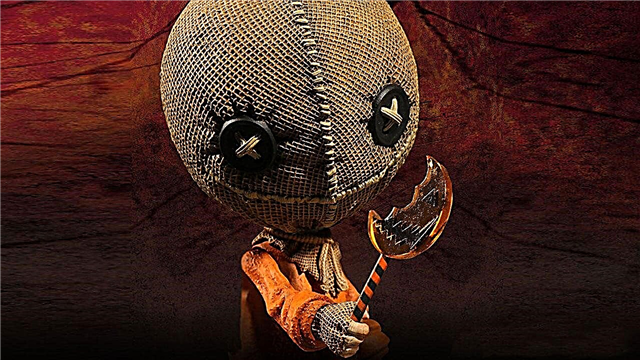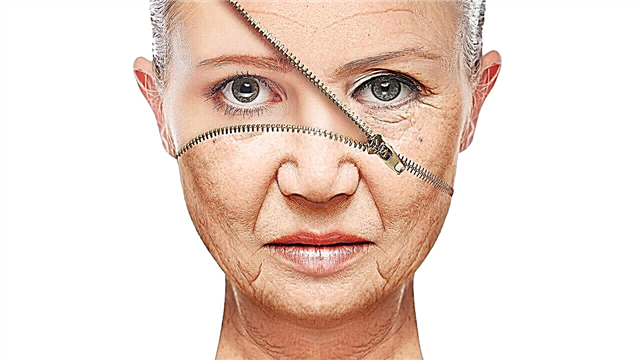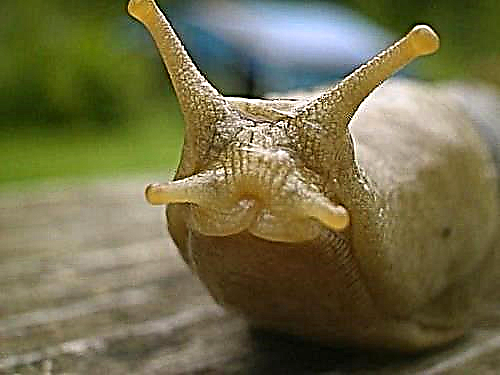Many insects look and act disgustingly. Mosquitoes, for example. Few people love these blood-sucking bastards who are able to bring to white heat with their squeak at night.
However, there are insects that are not just ugly, but also truly disgusting in their appearance and (or) habits. These little guys the scariest insects in the world. The list also includes some particularly vile insects, representatives of the arachnid class.
10. Centipede home
 Something between two creepy insects - spiders and millipedes. Domestic millipedes (they are also domestic scolopendra and common flycatchers) actually eat spiders, bed bugs, moths, cockroaches, ants and other guests whom we hate in our house (people are not included in the diet).
Something between two creepy insects - spiders and millipedes. Domestic millipedes (they are also domestic scolopendra and common flycatchers) actually eat spiders, bed bugs, moths, cockroaches, ants and other guests whom we hate in our house (people are not included in the diet).

They grow up to 6 centimeters in length and are poisonous creatures. The poison (if the centipede goes crazy and risks attacking a person) feels like a bee sting. However, it is not dangerous to life and health. And when the centipede itself risks becoming prey, it can separate the legs that are trapped from the body.
9. Bedbug
 Most species of these tiny bloodsuckers feed on humans only when other victims are unavailable. Their bites are usually not noticeable because they bite mainly at night when we sleep. The line of the neck and jaw is especially loved by bed bugs.
Most species of these tiny bloodsuckers feed on humans only when other victims are unavailable. Their bites are usually not noticeable because they bite mainly at night when we sleep. The line of the neck and jaw is especially loved by bed bugs.
Usually the bug spends about 20 minutes in physical contact with its owner, and after a hearty meal, it will not try to feed again until it completes the molting process or (if the adult is adult) completely digests the food.
8. Ixodid tick
 One of the most despicable and dangerous representatives of the arachnid class has adapted to survive even in the Arctic and Antarctic. Yes, ixodid ticks live even on penguins.
One of the most despicable and dangerous representatives of the arachnid class has adapted to survive even in the Arctic and Antarctic. Yes, ixodid ticks live even on penguins.
There are 650 species of ixodid ticks. However, most often people and animals bite a dog tick (Ixodes ricinus) and a taiga tick (Ixodes persulcatus). Contrary to popular belief, ticks do not fall from trees onto a gutted traveler. They lurk victims sitting on stalks and blades of grass, and with the help of claws and suction cups on their paws attach to a person or animal. If necessary, the tick can move quite fast.
7. Giant Veta (Ueta)

These wingless and fat "cuties" are actually not so scary when compared with previous members of the list of the most disgusting insects on Earth. But if you stumbled upon something as huge during a walk, I bet you would scream. These representatives of the genus Deinacrida are found in New Zealand and can grow up to three times larger than a normal mouse, making them one of the largest insects in the world.
 In 2011, the largest officially registered Veta weighed 71 grams. For some reason, the discoverer decided to feed the insect with carrots. Pretty sweet and very, very weird.
In 2011, the largest officially registered Veta weighed 71 grams. For some reason, the discoverer decided to feed the insect with carrots. Pretty sweet and very, very weird.
6. Ant lion larva
 These insects got their name because of the appearance and lifestyle of the larvae. They have a short wide abdomen and powerful sickle-shaped jaws with channels through which they suck out the prey.
These insects got their name because of the appearance and lifestyle of the larvae. They have a short wide abdomen and powerful sickle-shaped jaws with channels through which they suck out the prey.
These ugly appearance of the crumbs live in the sand, in the craters, which reach 5 centimeters in depth and 8 centimeters in diameter. In the center of the funnel, its owner sits with his jaw out and waiting for his prey. Usually these are ants and various arthropods. If the victim manages to get out of the funnel, then the ant lion's larva begins to throw sand at it with the help of sudden movements of its head. From such a sand attack, the victim is often knocked down and falls back to the bottom of the funnel. Then it is sucked out and the unnecessary chitinous exoskeleton is simply thrown out by the larva from its house.
5. Kissing bug
 Imagine someone who has a needle on their face. He injects the poison with a needle, and then sucks the liquefied innards of the victim through the same needle. Now imagine that such a creature is real. And it is called a kiss bug or a triatom bug.
Imagine someone who has a needle on their face. He injects the poison with a needle, and then sucks the liquefied innards of the victim through the same needle. Now imagine that such a creature is real. And it is called a kiss bug or a triatom bug.
 Some species of kissing bugs camouflage themselves with the remains of dead insects, which form a very effective camouflage. And some of the vilest insects in the world have earned their name because they like to bite sleeping people in soft tissues around their lips and eyes. Fortunately, you are unlikely to encounter them if you are not going to travel to the American tropics, Mexico or Central America.
Some species of kissing bugs camouflage themselves with the remains of dead insects, which form a very effective camouflage. And some of the vilest insects in the world have earned their name because they like to bite sleeping people in soft tissues around their lips and eyes. Fortunately, you are unlikely to encounter them if you are not going to travel to the American tropics, Mexico or Central America.
4. Camel Spider
 One of the largest spiders in the world is distinguished not only by its ugly appearance, but also by its very powerful jaws, which are able to bite through a person’s nail. In South Africa, camel spiders are called "hairdressers" because of the belief that they cut the hairs of people and animals with their jaws and then lay down their underground burrows. Would you make an appointment with such a hairdresser? I - definitely not.
One of the largest spiders in the world is distinguished not only by its ugly appearance, but also by its very powerful jaws, which are able to bite through a person’s nail. In South Africa, camel spiders are called "hairdressers" because of the belief that they cut the hairs of people and animals with their jaws and then lay down their underground burrows. Would you make an appointment with such a hairdresser? I - definitely not.
3. Cockroach
 They hide in dark corners and sneak in the dark on all their hairy legs. In our kitchen! For food!
They hide in dark corners and sneak in the dark on all their hairy legs. In our kitchen! For food!
They are fast, omnivorous (even eating paper, genuine leather and gouache) and perfectly adapt to any living conditions. When threatened to be crushed by a slipper, a cockroach can run 22 cm - about 50 lengths of its body - per second. It is like a person running at a speed of 330 kilometers per hour. Perhaps in the case of a nuclear apocalypse, when some go to heaven and others just die, the cockroaches will survive safely. Vile prospect, huh?
2. Japanese huge hornet
 These ferocious winged devils can grow up to 4 centimeters in length, and their wingspan reaches 6 centimeters. Their huge 6mm sting injects poison, which is not only very painful, but can also affect the nervous system.
These ferocious winged devils can grow up to 4 centimeters in length, and their wingspan reaches 6 centimeters. Their huge 6mm sting injects poison, which is not only very painful, but can also affect the nervous system.
 Huge hornets fly at a speed of up to 40 km per hour and at distances of up to 100 km, so do not try to escape from these insects - you will lose.
Huge hornets fly at a speed of up to 40 km per hour and at distances of up to 100 km, so do not try to escape from these insects - you will lose.
 Japanese huge hornets are known for their aggressiveness and fearlessness, especially in relation to European honey bees, which are often kept by Japanese farmers. If a hornet stumbles upon a hive, he will mark it with pheromones so that other hornets in the area know about his presence. Then begins a terrible slaughter. Hornets dismember defenseless bees with their sharp mandibles (mandibles). One hornet can kill about 40 bees per minute!
Japanese huge hornets are known for their aggressiveness and fearlessness, especially in relation to European honey bees, which are often kept by Japanese farmers. If a hornet stumbles upon a hive, he will mark it with pheromones so that other hornets in the area know about his presence. Then begins a terrible slaughter. Hornets dismember defenseless bees with their sharp mandibles (mandibles). One hornet can kill about 40 bees per minute!
1. Malaysian killer bug
 There are many different types of so-called killer bugs (within the Reduviidae family), some of which can transmit dangerous diseases to people, such as Chagas disease.
There are many different types of so-called killer bugs (within the Reduviidae family), some of which can transmit dangerous diseases to people, such as Chagas disease.
 These insects deserve their pseudonym because they attack quickly and ruthlessly. They make a proboscis puncture and introduce an enzyme to their prey, which softens the insides so that they can be sucked out like a delicious organic smoothie. And one species found in Malaysia (Akantaspis petax) even glues the corpses of victims - mainly ants - to their back with sticky secretions. And wears them like a kind of armor, and in case of danger can drop them and run away light. It is unlikely that anyone would want to get involved with a vile insect hung with the corpses of enemies.
These insects deserve their pseudonym because they attack quickly and ruthlessly. They make a proboscis puncture and introduce an enzyme to their prey, which softens the insides so that they can be sucked out like a delicious organic smoothie. And one species found in Malaysia (Akantaspis petax) even glues the corpses of victims - mainly ants - to their back with sticky secretions. And wears them like a kind of armor, and in case of danger can drop them and run away light. It is unlikely that anyone would want to get involved with a vile insect hung with the corpses of enemies.












